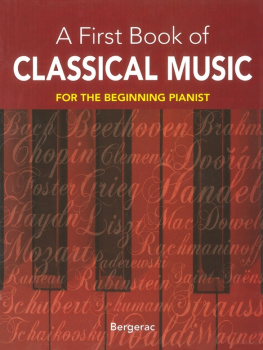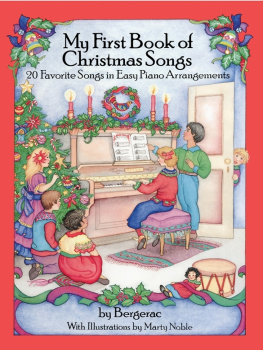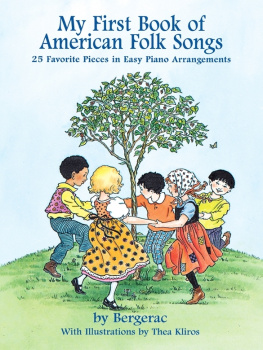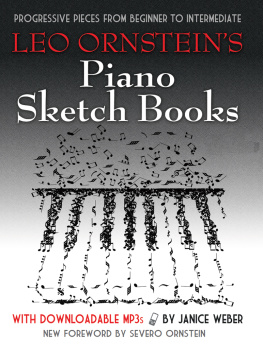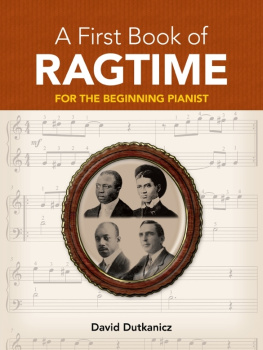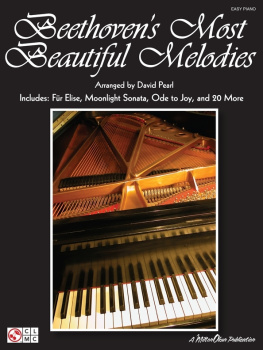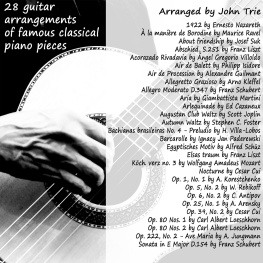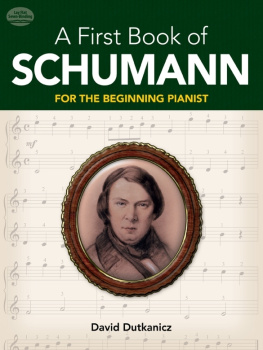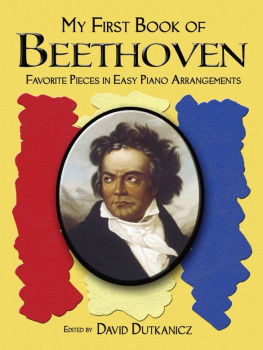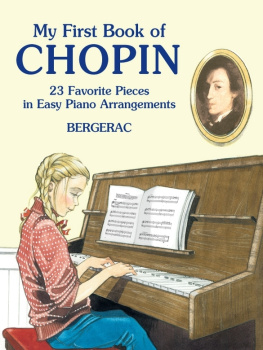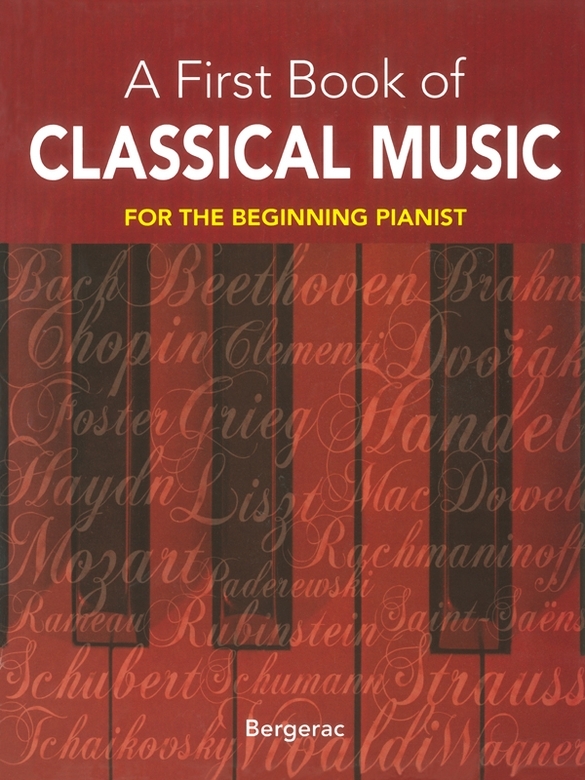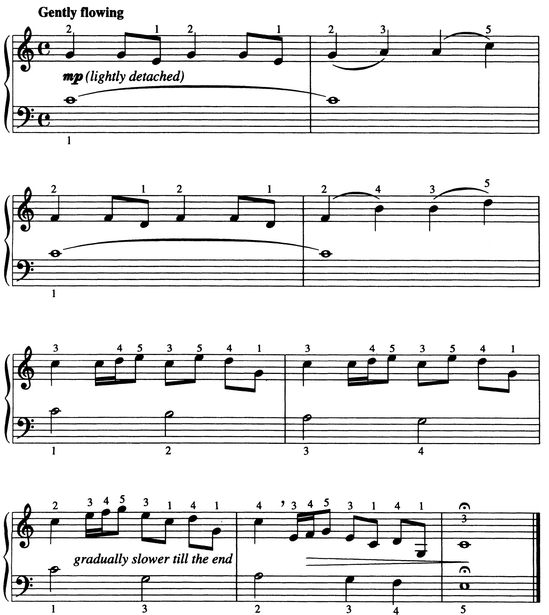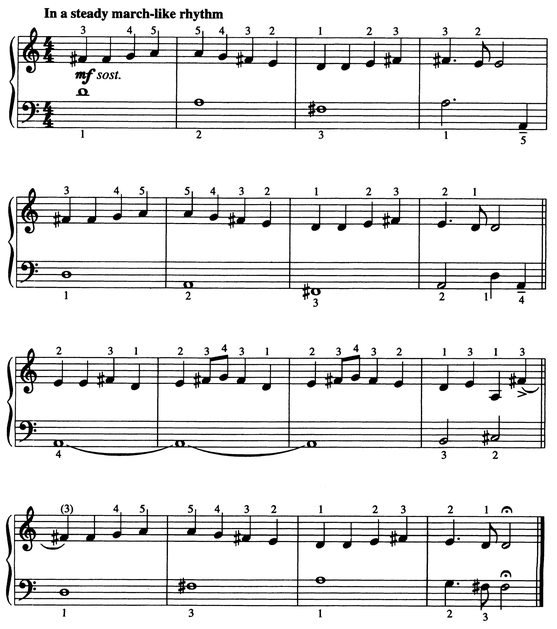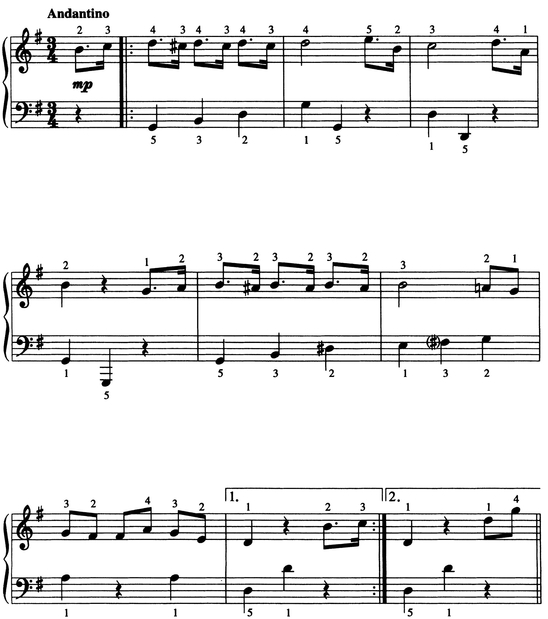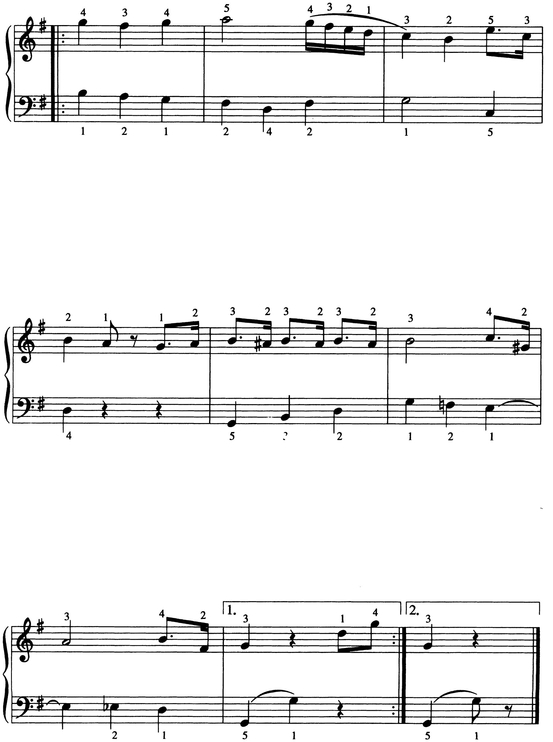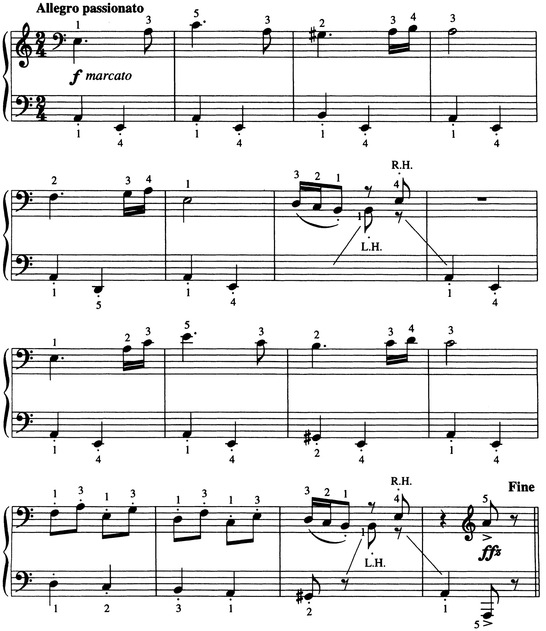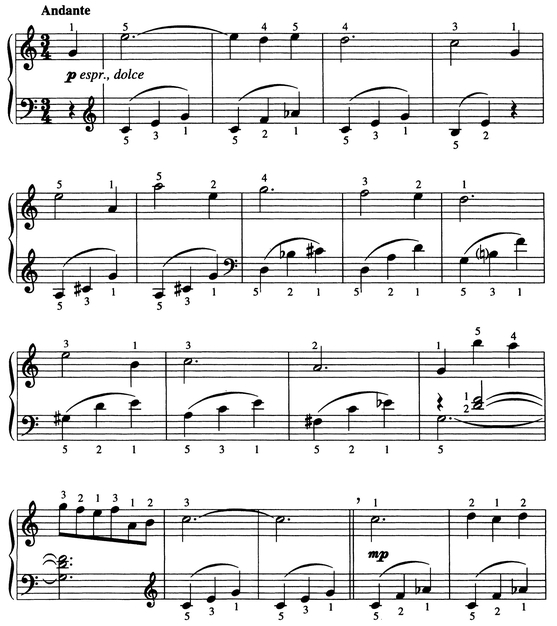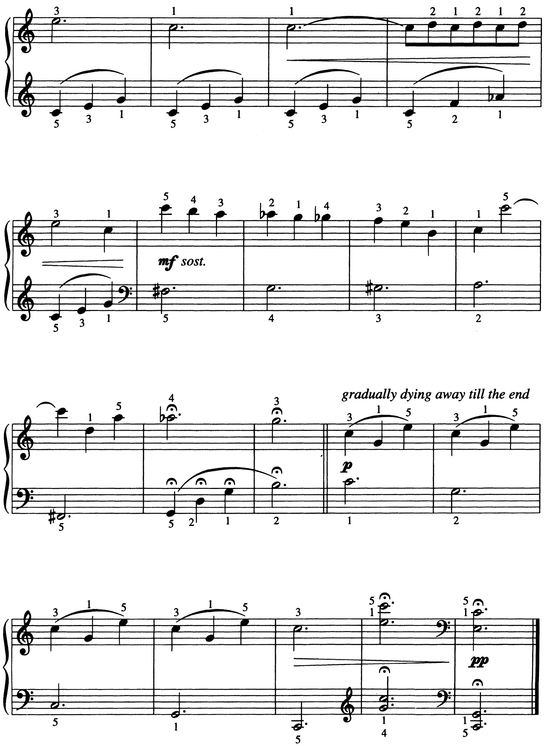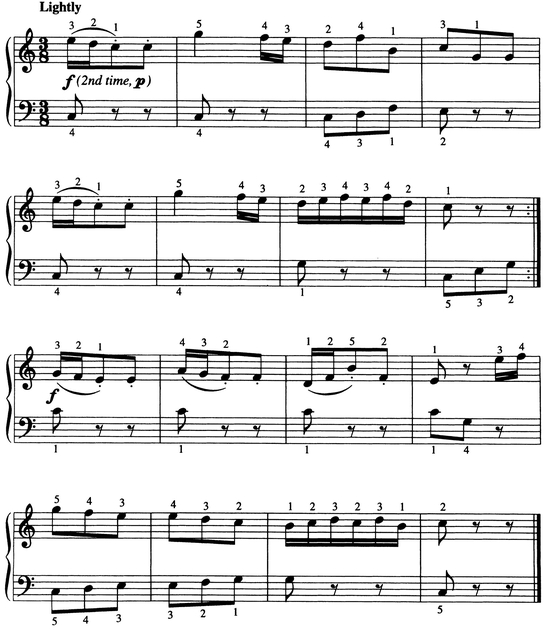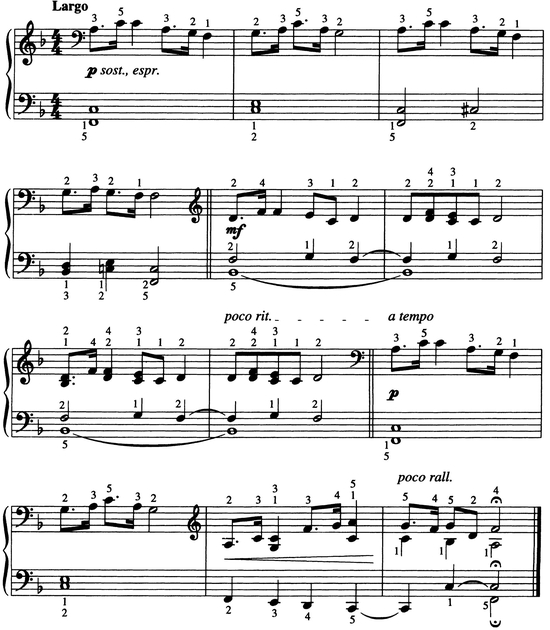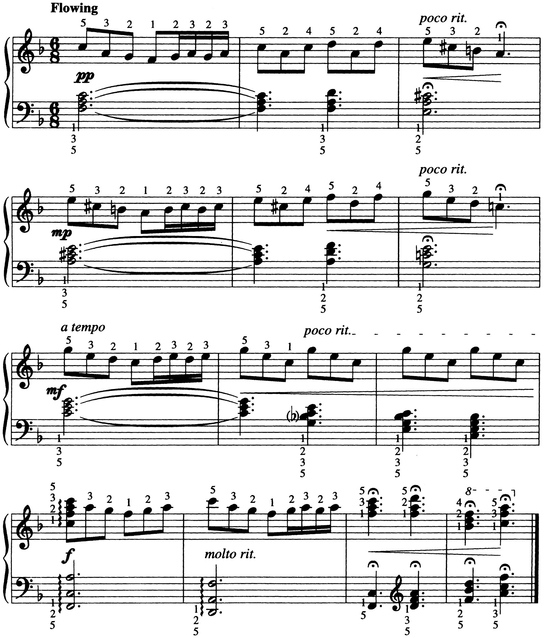Johann Sebastian Bach
(Germany, 16851750)
MINUET
Bachs young wife, Anna Magdalena, brought great happiness to his household. Together they kept little notebooks that were full of the most miscellaneous matters, including the manuscript of this graceful minuet that he composed for her in 1722, when he was 37 years old. Such court dances were extremely popular among the nobility of Europe.
Johann Sebastian Bach
SHEEP MAY SAFELY GRAZE
Five years before his marriage to Anna, Bach wrote special music for the birthday of Duke Christian, celebrated in the form of a great hunting festival. The singers played roles from ancient mythology, including Pales (pronounced Pah-less ) the goddess of flocks and herds. This is her lovely, serene aria, singing about the free, open-air life of shepherds and their flocks.
Ludwig van Beethoven
(Germany, 17741827)
ODE TO JOY
In the year 1822exactly 100 years after Bach composed his gentle minuet for Anna (see p. 5)Beethoven solved the troublesome problem of how to end his colossal Symphony No. 9. It would be a musical setting for full chorus of Ode to Joy, a poem by Friedrich Schiller: Joy, we are under your divine spell. All men become brothers wherever joy is found...
Ludwig van Beethoven
MINUET IN G
This charming court dance is one of Beethovens most famous pieces. Despite his reputation for lengthy, dramatic compositions, the composer was also fond of writing such short dance music as ccossaises (in Scottish style), allemandes (in German style), and country dances called Lndler and contredanses. He composed the Minuet in G about 1795, when he was 25 years old.
Johannes Brahms
(Germany, 18331897)
HUNGARIAN DANCE NO. 5
In 1848, when he was 15, a stream of Hungarian rebels passed through Brahmss hometown of Hamburg on their way to America. Some stayed on, bringing their music with them, starting a national craze for the wild, passionate music of the Hungarian Gypsies. Four years later, Brahms began to compose 21 Hungarian Dances, recalling those wonderful tunes and rhythms.
Frdric Chopin
(Poland and France, 18101849)
NOCTURNE
Piano composers in the 19th century were fond of giving fanciful, often meaningless, names to their piecessuch as rhapsody, impromptu, album leaf, intermezzo, fantasy and so on. Chopin liked the French word nocturne (night piece) for 21 piano pieces composed in a dreamy mood. This one (Opus 9, No. 2) is his most famous nocturne, full of beautiful melody.
Muzio Clementi
(Italy, 17521832)
RONDO IN C
(From Sonata in C, Op. 36, No. 1)
Its hard to imagine Clementis sensational career: keyboard virtuoso, teacher, conductor, composer, publisher (he had a contract with Beethoven), and piano manufacturer trading as Clementi & Company, London. Travelling all over Europe and Russia, he even performed in a piano contest before European royalty. (His opponent, believe it or not, was Mozart himself.)
Antonn Dvok
(Czechoslovakia, 18411904)
FROM THE NEW WORLD
(Slow theme from the second movement of Symphony No. 9, Op. 95)
Dvok was 51 when he was invited to America as director of a New York music conservatory. He arrived with his family for a three-year stay, spending their summers in a Czech community in Iowa. There, in 1893, he completed his Symphony From the New World. The song Goin Home, with words by William Arms Fisher (1922), was based on Dvoks original slow theme for the second movement. It was not a Negro spiritual, as some people believed.
Stephen C. Foster
(United States, 18261864)
BEAUTIFUL DREAMER
(His last song ever written / 1864)
In a life cut tragically short (he died in poverty at age 38), Stephen Collins Foster wrote about 200 songs. Many are so well-known, and have been around for such a long time, that we think of them as genuine folk songs. His famous My Old Kentucky Home became the offical state song of Kentucky, and his beloved Old Folks at Home was chosen as Floridas state song.
Edvard Grieg
(Norway, 18431907)
MORNING MOOD
Grieg loved his native Norway, pouring the sounds and feelings of its folk songs and dances into his music. At the age of 31, Grieg was invited by the famous Norwegian playwright Henrik Ibsen to write incidental music to accompany his play Peer Gynt. Morning Mood, Anitras Dance and In the Hall of the Mountain King are three world-famous selections from that fine music.
George Frideric Handel
(Germany & England, 16851759)
SARABANDE
Did you know that Johann Sebastian Bach, Domenico Scarlatti and Handel were all born in the same year (1685)? All three were not only great composers, but phenomenal keyboard virtuosos as well. They wrote and performed some of the greatest, most popular harpsichord music ever composed. This stately court dance is from Handels Suite in D minor for harpsichord, published in 1720.

